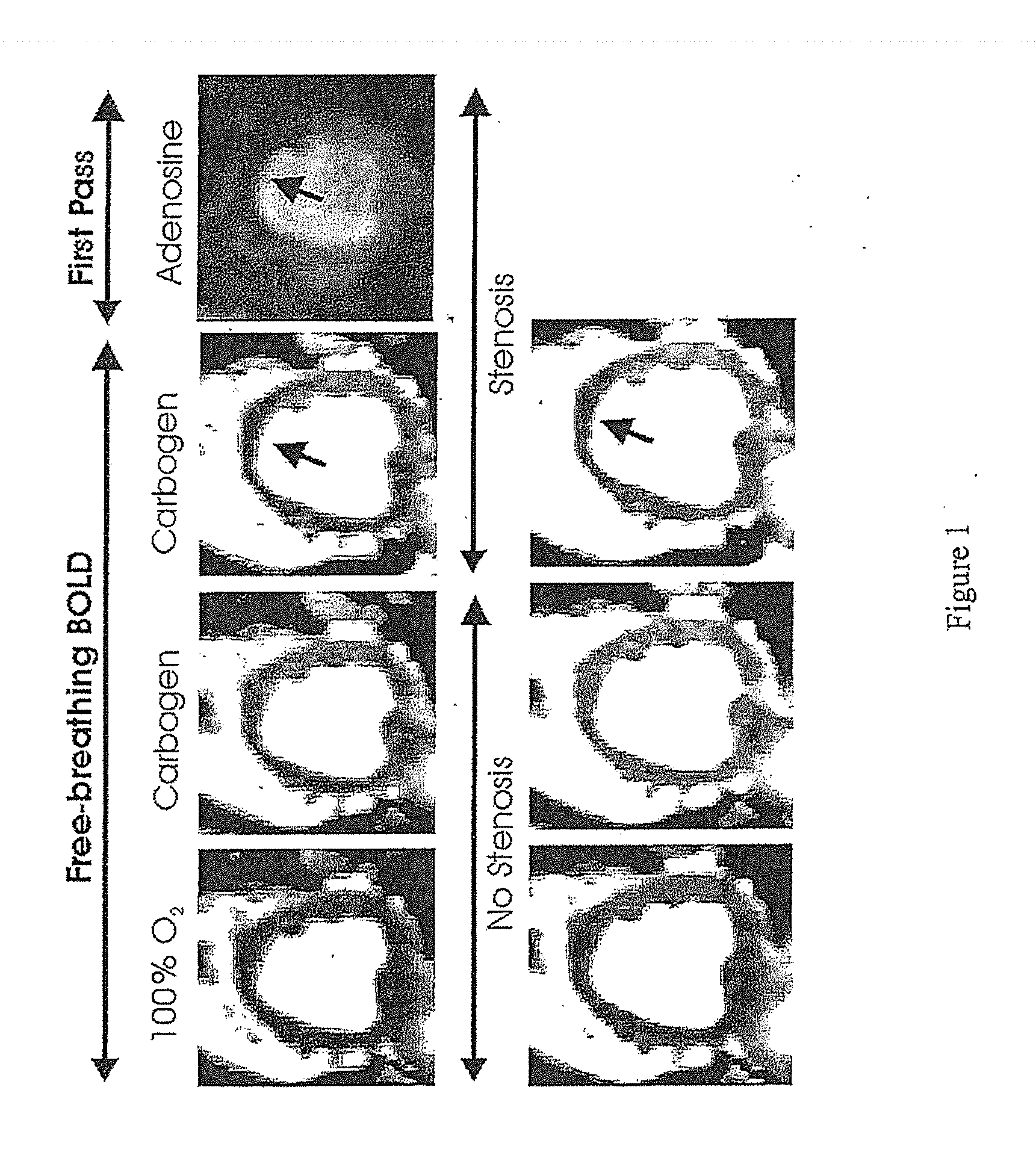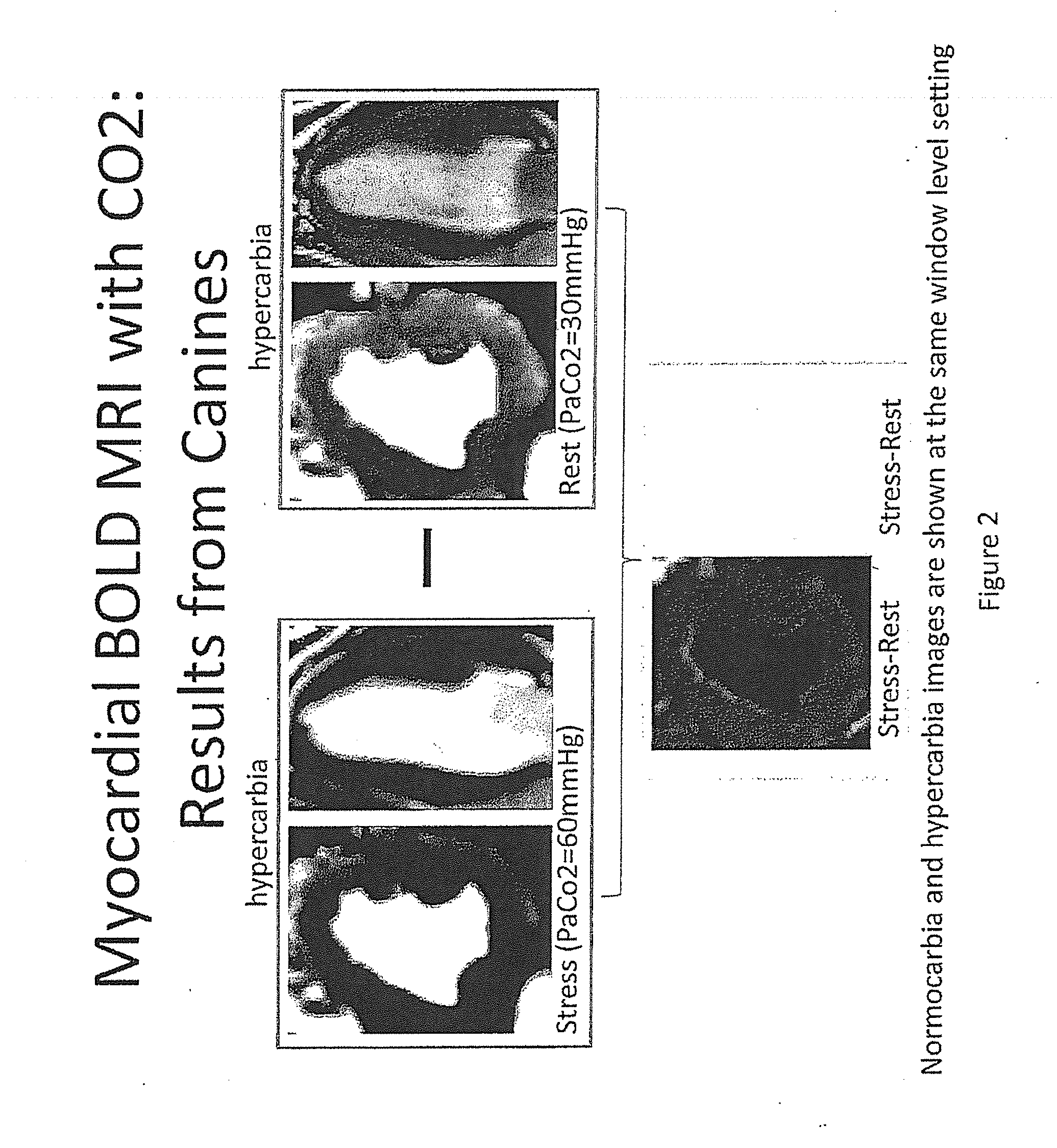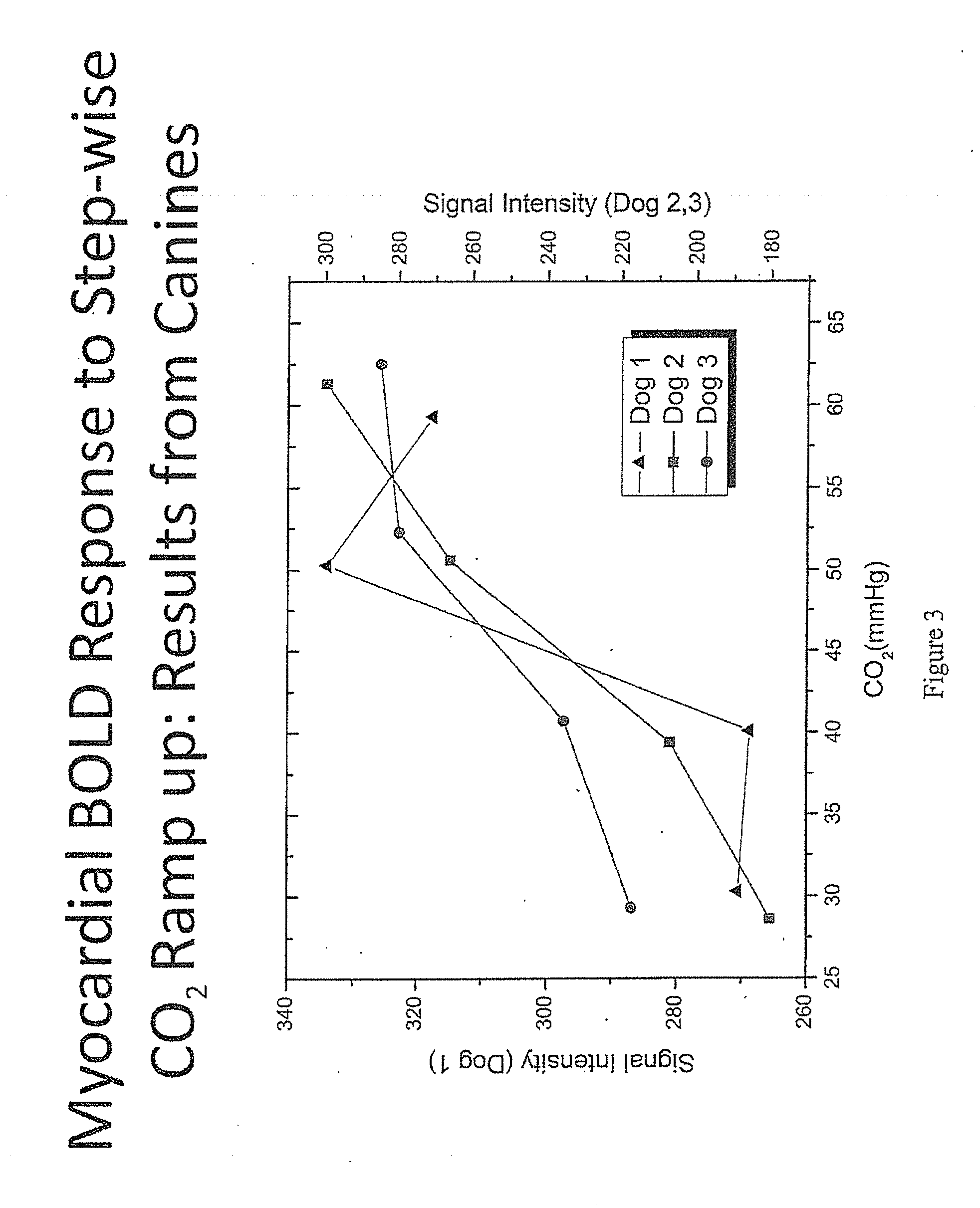Assessment of coronary heart disease with carbon dioxide
- Summary
- Abstract
- Description
- Claims
- Application Information
AI Technical Summary
Benefits of technology
Problems solved by technology
Method used
Image
Examples
example 1
[0105]The inventor has shown that CO2 can increase myocardial perfusion by a similar amount, as does adenosine in canine models. The inventor has also shown that in the setting of coronary artery narrowing, it is possible to detect regional variations in hyperemic response with the use of MRI by detecting signal changes in the myocardium due to changes in oxygen saturation (also known as the BOLD effect) using a free-breathing BOLD MRI approach.
[0106]As show in FIG. 1, the inventor found a 20% BOLD signal increase (hyperemic response) with medical-grade carbogen breathing in the absence of stenosis in dogs. With a severe stenosis, the hyperemic response was significantly reduced in the LAD (left anterior descending) territory but the other regions showed an increase in signal intensity (as observed with adenosine). First-pass perfusion images acquired with adenosine under severe stenosis (in the same slice position and trigger time) is also shown for comparison. Heart rate increase ...
example 2
Co-Relation Between Inhaled CO2 and Oxygen Saturation
[0108]Applicants assessed the difference between myocardial blood-oxygen-level dependent (BOLD) response under hypercarbia and normocarbia conditions in canines. The BOLD signal intensity is proportional to oxygen saturation.
[0109]Top panels of FIG. 2 depict the myocardial response under hypercarbia (60 mm Hg) and normocarbia (30 mmHg) conditions and show an increase in BOLD signal intensity under hypercarbia condition. The lower panel depicts the difference as obtained by subtracting the signal under rest from that under stress. The myocardial BOLD signal difference between the two is depicted in grey and shows the responsiveness of canines to hypercarbia conditions.
[0110]Applicants further assessed the myocardial BOLD response to stepwise CO2 increase (ramp-up) in canines. As shown in FIG. 3, as the amount of CO2 administered increases, the BOLD signal intensity increases which is indicative of an increase in hyperemic response ...
example 3
[0112]Co-Relation Between the Amount of CO2 Inhaled and Doppler Flow
[0113]Doppler flow, an ultrasound-based approach which uses sound waves to measure blood flow, was used to show that administration of CO2 leads to vasodilation which results in greater blood flow, while PaO2 is held constant. The Doppler flow was measured in the left anterior descending (LAD) artery. As shown in FIG. 5, as the amount of administered CO2 increases the Doppler flow increases. The relative change in coronary flow velocity is directly proportional to the amount of CO2 administered.
PUM
 Login to View More
Login to View More Abstract
Description
Claims
Application Information
 Login to View More
Login to View More - R&D
- Intellectual Property
- Life Sciences
- Materials
- Tech Scout
- Unparalleled Data Quality
- Higher Quality Content
- 60% Fewer Hallucinations
Browse by: Latest US Patents, China's latest patents, Technical Efficacy Thesaurus, Application Domain, Technology Topic, Popular Technical Reports.
© 2025 PatSnap. All rights reserved.Legal|Privacy policy|Modern Slavery Act Transparency Statement|Sitemap|About US| Contact US: help@patsnap.com



